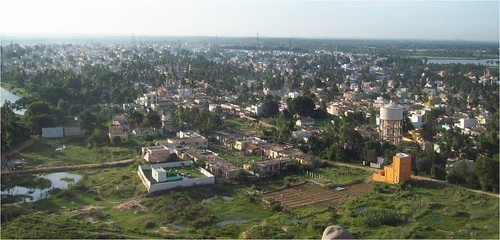/topics/treatment-and-purification
Treatment and Purification
Strategies for achieving environmental sustainability in rural development - A report by United Nations Development Programme
Posted on 23 Feb, 2013 10:22 AMThis report by the United Nations Development Programme (UNDP) presents strategies for inclusive rural development embodying the principles of environmental sustainability. It recommends measures needed to achieve green, including measuring and tracking, the use incentives and the building of capacities. It also contains a number of case studies showing how green results can be achieved.
Anthropogenic activities leads to deterioration of groundwater quality: A study of Mayyanad and Edamulakkal panchayats of Kollam district in Kerala
Posted on 22 Feb, 2013 10:07 AMKerala is a rain blessed state in the country. It has highest number of wells, when compared with other states. However due to its slanting topography there is significant decline in the ground water levels leading to severe water scarcity during summer months in most districts of the state. Further over extraction and dependence of groundwater for domestic use from the dug wells especially in rural pockets has resulted in several groundwater problems. In this backdrop the paper in The Ecosan- An International Quarterly Journal of Environmental Science, sheds light on groundwater quality issues in two panchayats of Kerala.
Assessing the land use change and its impact on water resources: A study on the Mula and Mutha rivers catchment area in Pune
Posted on 17 Feb, 2013 09:11 PMLand use changes hydrologic system and have potentially large impacts on water resources. An assessment in an area with seasonally limited water availability and which is subject to rapid socio- economic development and population growth will provide an exemplary view on the local impacts of major recent developments in India. In this backdrop this paper analyzes past land use changes between 1989 and 2009 and their impacts on the water balance in the Mula and Mutha Rivers catchment upstream of Pune. The aim of the paper is:
- assess the land use changes between 1989/1990 and 2009/2010
- analyze the impacts of these changes on the long-term water balance components in the Mula and Mutha Rivers catchment upstream of the city of Pune.
Influence of anthropogenic contamination on fluoride concentration in groundwater: A study of Mulbagal town, Kolar district, Karnataka
Posted on 15 Feb, 2013 04:53 PMGroundwater contamination is a serious, but relatively ignored issue in the country. This contamination occurs in either through geogenic or anthropogenic means. Fluoride contamination is one such example of geogenic contamination that is widely found in the Kolar district of Karnataka. However, the fluoride levels in the town of Mulbagal are lower than those in the surroundings. Earlier, a study was conducted on the impact of pit toilets on the groundwater in the area. The present paper investigates the presence of any link between these two phenomena.
Guidelines for decentralized wastewater management by Ministry of Urban Development (2012)
Posted on 12 Feb, 2013 07:36 PMThis guideline is prepared by the Centre of Excellence in the area of Decentralized Wastewater Management, in the Department of Civil Engineering at Indian Institute of Technology, Madras, which comes under Ministry of Urban Development
Process of formation of Jajmau Area Water Partnership in Kanpur, Uttar Pradesh – Problems and solutions
Posted on 13 Jan, 2013 12:01 PMIndustrial effluents and sewage water are being diverted to the river Ganga by the cities and towns through which it passes. Nestled on the banks of Ganga, Kanpur, a highly urbanized and industrial city is polluting it most. Apart from the Government of India’s recently constituted National Ganga River Basin Authority, civil societies and NGOs too are putting rigorous efforts to make Ganga pollution free. Though the city has several big and small industries, the leather industries located in Jajmau, the oldest part of the city add to the problem of pollution in the river to a large extent.
Living rivers, dying rivers: Stuffed rivers of Vrishabhavathi-Arkavathi from the Cauvery system
Posted on 02 Dec, 2012 08:16 PMIntroduction

Drinking water treatment technologies - A handbook by National Environmental Engineering Research Institute & Ministry of Drinking Water and Sanitation
Posted on 30 Nov, 2012 10:22 PMThis handbook prepared by National Environmental Engineering Research Institute has eight chapters:
Chapter 1 introduces the objectives and approaches adopted to prepare the handbook.
Public Private Partnership (PPP) projects in water in Delhi a burden on public, says Citizens Front for Water Democracy
Posted on 14 Nov, 2012 06:49 PMPoliticians/DJB members, board officials work in connivance with consultants and companies causing losses to the public exchequer. Delhiites get water at high rates and increased water bills as 50 per cent of DJB work is under private operators.
Ion Exchange to display high purity water solutions for the pharma industry at PMEC (2012)
Posted on 30 Oct, 2012 12:23 PMKey features of the INDION RO-EDI:
• Fully pre-validated to industry accepted standards
• Packaged on single skid
• Hot water sanitization
• Fully functional FAT (factory acceptance test)
• Compliance with latest USP, Ph Eur, cGMP/cGAMP & ISPE specifications and design standards
• Fully automated with SCADA





